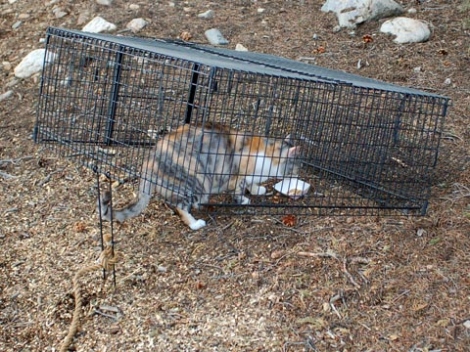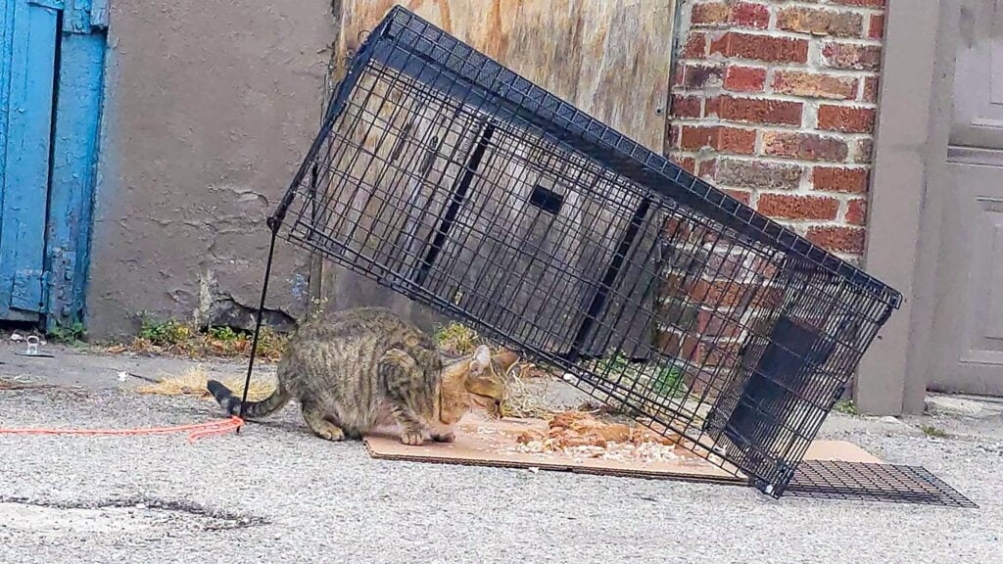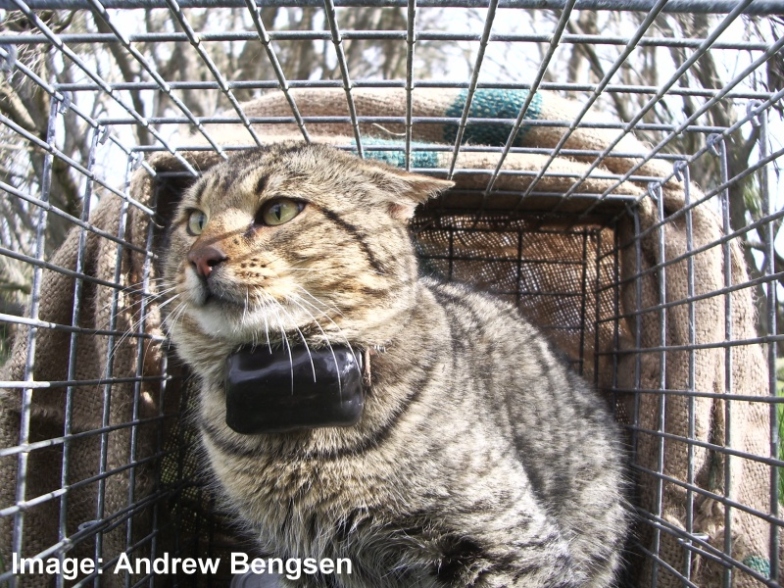Purr-fect Preparations: Setting the Stage for a Successful Trap!
Welcome to the ultimate guide on safely trapping a wild feral Cat! In this article, we will dive into the first step in the process – setting the stage for a successful trap. By following these expert tips and tricks, you’ll be well on your way to safely capturing and caring for a feral cat in need.

Image Source: plannedpethoodtaos.org
Before you begin trapping a wild feral cat, it’s important to make sure you have all the necessary preparations in place. This includes gathering the right supplies, finding the ideal location, and setting up the trap for maximum effectiveness.
First and foremost, you’ll need a humane cat trap. These traps are designed to safely capture the cat without causing harm. Make sure to choose a trap that is appropriate for the size of the cat you are trying to catch.

Image Source: catsinaction.org
Next, you’ll need to find the perfect location to set up the trap. Look for areas where feral cats are known to frequent, such as near food sources or shelter. Make sure the trap is placed on a flat surface and is stable to prevent it from tipping over during the trapping process.
Once you have the trap set up in the ideal location, it’s time to bait it. Feral cats are attracted to strong-smelling food, so consider using canned tuna, sardines, or wet cat food as bait. Place the bait inside the trap, making sure it is positioned in a way that will encourage the cat to enter the trap fully.

Image Source: pestsmart.org.au
In addition to baiting the trap, it’s important to create a trail of food leading up to the trap to entice the cat to come closer. This will help guide the cat towards the trap and increase the chances of a successful capture.
Now that you have the trap set up and baited, it’s time to be patient. Trapping a feral cat can take time, so it’s important to be prepared to wait for the cat to enter the trap. Make sure to check the trap regularly to see if the cat has been captured.
Once the cat has been safely trapped, it’s important to handle the situation with care and caution. Approach the trap slowly and avoid sudden movements that could startle the cat. Keep a safe distance and allow the cat to calm down before attempting to transport it.
With these purr-fect preparations in place, you’ll be well on your way to successfully trapping a wild feral cat. Stay tuned for the next part of our guide, where we’ll explore sneaky strategies for outsmarting feral felines with care and finesse. Happy trapping!
Ultimate Guide to Safely Trapping a Wild Feral Cat
The Ultimate Guide to Safely Trapping a Wild Feral Cat: Expert Tips and Tricks
Sneaky Strategies: Outsmarting Feral Felines with Care and Finesse
When it comes to trapping a wild feral cat, it’s important to approach the task with both caution and creativity. These elusive creatures are skilled at evading capture, so it’s crucial to have a few sneaky strategies up your sleeve to outsmart them and safely secure them in a trap.
One of the most effective ways to trap a feral cat is to use their natural curiosity against them. Set up a trap with enticing bait inside, such as tuna or wet cat food, and place it in an area where the cat is known to frequent. Make sure the trap is hidden from view and surrounded by familiar scents to make it seem like a safe and inviting space for the cat to explore.
Another sneaky strategy is to use a drop trap, which is a trap that is triggered remotely by the trapper. This allows you to stay at a safe distance while the cat is captured, reducing the risk of injury to both you and the cat. Drop traps can be especially useful for trapping feral cats that are wary of traditional box traps.
In addition to using bait and drop traps, you can also try to establish a feeding routine to lure the feral cat into a trap. By consistently feeding the cat at the same time and place each day, you can create a sense of routine that the cat will come to rely on. Once the cat is comfortable with the feeding routine, you can set up a trap with food inside to capture them safely.
It’s important to remember that trapping a feral cat requires patience and persistence. These cats are skilled at avoiding capture, so it may take several attempts before you are successful. Stay calm and focused, and don’t give up if your first few attempts are unsuccessful. With the right strategies and a little bit of luck, you can outsmart even the most cunning feral feline and safely trap them for relocation or TNR (trap-neuter-return) purposes.
Trap Tranquility: Keeping the Cat Calm and Comfortable
When it comes to safely trapping a wild feral cat, one of the most important aspects to consider is the cat’s comfort and well-being during the trapping process. It’s essential to keep the cat as calm as possible to ensure a successful capture without causing unnecessary stress or harm to the animal. Here are some expert tips and tricks to help you maintain trap tranquility and ensure a smooth trapping experience.
First and foremost, it’s crucial to choose the right type of trap for trapping feral cats. A humane live trap is the best option, as it allows the cat to enter the trap without being harmed and can be easily transported once captured. Make sure the trap is large enough for the cat to move around comfortably and has a secure latch to prevent escape.
Before setting the trap, create a calming environment for the cat by placing familiar objects inside the trap, such as a towel or blanket with the cat’s scent, or a small amount of food to entice the cat to enter. This will help the cat feel more at ease and increase the chances of a successful capture.
When it’s time to set the trap, make sure to do so in a quiet and secluded area to minimize stress for the cat. Avoid loud noises or sudden movements that could startle the cat and cause it to flee. Keep a safe distance from the trap and monitor it carefully to ensure the cat is captured quickly and safely.
Once the cat has been trapped, it’s important to handle the situation with care and compassion. Approach the trap calmly and quietly to avoid frightening the cat, and cover the trap with a towel or blanket to create a sense of security for the cat. This will help keep the cat calm and reduce stress during transport.
When transporting the trapped cat, keep the trap level and secure to prevent any jostling or shaking that could cause the cat distress. Avoid sudden stops or sharp turns while driving, and make sure the cat has access to fresh air and water during transport. If the journey is long, consider stopping periodically to check on the cat and ensure its comfort.
Once you’ve safely transported the trapped cat to a secure location, it’s time to assess the cat’s condition and determine the best course of action. If the cat appears healthy and uninjured, you may choose to release it back into the wild in the same location where it was trapped. Make sure to release the cat in a safe area away from busy roads or other potential dangers.
If the cat requires medical attention or socialization, contact a local animal rescue organization or veterinarian for assistance. They can provide the necessary care and support to help the cat recover and find a suitable forever Home. Remember, the ultimate goal is to ensure the cat’s safety and well-being throughout the trapping and release process.
In conclusion, trap tranquility is essential for safely trapping a wild feral cat. By following these expert tips and tricks, you can help keep the cat calm and comfortable during the trapping process, ensuring a successful capture without causing unnecessary stress or harm. With care and compassion, you can safely trap and release feral cats back into the wild, helping to protect and preserve these majestic creatures for future generations to enjoy.
Feline Freedom: Releasing Safely Back into the Wild!
As you embark on the journey of safely trapping a wild feral Cat, one of the most crucial steps is the release back into the wild. This moment is not only a significant milestone for the cat but also a rewarding experience for you as a caretaker. In this guide, we will explore the best practices for releasing a feral cat back into its natural habitat with care and compassion.
Before releasing the feral cat, it is essential to ensure that the environment is safe and suitable for its return. This includes checking for potential hazards such as predators, traffic, and other dangers that may pose a threat to the cat. Choose a location that is familiar to the cat and away from busy roads or human activity.
When releasing the feral cat, it is important to do so in a calm and gentle manner. Approach the trap slowly and quietly, avoiding sudden movements that may startle the cat. Open the trap door slowly, allowing the cat to exit at its own pace. Remember, feral cats are wary of humans and may be frightened, so it is crucial to give them space and time to adjust to their new surroundings.
As the feral cat exits the trap, observe its behavior closely. Some cats may dart off immediately, while others may take their time to explore the area before venturing further. Allow the cat to acclimate to its surroundings before leaving the area, ensuring that it feels safe and secure.
Once the feral cat has been released, it is important to continue monitoring its progress in the wild. Check in on the cat periodically to ensure that it is adapting well to its new environment and is able to find food and shelter. Providing supplemental food and water can also help support the cat as it transitions back into the wild.
In some cases, feral cats may need additional support after being released, such as shelter or medical care. Consider setting up a feeding station or providing a shelter for the cat to seek refuge in during inclement weather. If the cat appears to be injured or sick, contact a local animal rescue organization for assistance.
Remember, releasing a feral cat back into the wild is a bittersweet moment. While it may be difficult to say goodbye, knowing that you have helped a cat find its freedom and independence is a rewarding experience. By following these tips and tricks, you can ensure a safe and successful release for the feral cat in your care.
In conclusion, releasing a feral cat back into the wild requires patience, compassion, and a deep respect for the cat’s natural instincts. By following the guidelines outlined in this guide, you can help ensure a smooth transition for the cat as it returns to its rightful place in the wild. Thank you for your dedication to caring for feral cats and promoting their well-being in the community.
how to catch a feral cat in a trap
